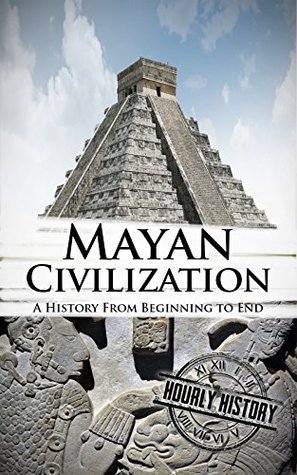More on this book
Community
Kindle Notes & Highlights
Read between
August 30 - September 1, 2020
Also, consider this: when the Spanish arrived in the 1580s, along the Caribbean coast, a Franciscan priest and his secretary Antonio de Ciudad Real asked some Indians, "What's the name of this place? How did it get its name?" In response, the Indians said uic athan, which means, “what do you say” or “what do you speak?” In other words, the Maya didn't understand them. Ciudad Real wrote, "The
Christopher Columbus arrived on July 30, 1502, at Guanaja, which is one of the Bay Islands off the northern coast of modern-day Honduras. He knew nothing about the lives, hearts, accomplishments and ways of the Maya.
By the time of his arrival, the royal city of Copan, northwest Honduras' most famous Maya site, had already been reclaimed by the jungle.
He detained one person, a man named Yumbé, as his guide. He continued to Cabo Gracias a Dios and all the way to present-day Panama.
The Maya enjoyed chocolate, usually unsweetened, as a frothy drink that was considered a very valuable commodity in trade. It would grow to become a sweeter version enjoyed by the Spanish in 1528, despite having been introduced to the cacao bean that day. It wouldn't be shared with the rest of the Europeans for 100 years.
According to an account by Diego de Landa, several of these men were sacrificed by the Maya people they encountered. He had been sent to bring the Catholic religion to the native people. Geronimo de Aguilar, a priest, and Gonzalo Guerrero, a sailor, were the only ones who survived.
Additionally, the Mayan sacred text, the Book of Chilam Balam, foretold the Spanish invasion, the conquest of the Maya and future suffering of the oppressed people.
Although the Maya wrote a detailed, historical record covering their entire history, the Spanish missionaries hoped to erase this indigenous history.
While the debate still lingers, many consider the Olmec influence so widespread that Olmec is considered the mother culture of the Americas. For instance, while the Maya are credited for the widely used concept of zero, the Olmecs are credited for having conceptualized it originally.
To the Maya, the jaguar was a symbol of war.
At sunset during the spring and fall equinoxes, Chichen Itza's pyramid casts a shadow on itself that aligns with a carving of the head of the Maya serpent god.
Would a Pope have apologized for the treatment of the Maya in any other time of history, as Pope Francis did?
As a civilization, the Maya contributed to our understanding of astronomy, architecture and city planning, math, calendrics, ecology, medicine, writing, technology, politics, anthropology, sociology, commerce, and the arts. They are credited for making the first pressurized hydraulic system.
Modern Maya in Guatemala and Chiapas practice a rich textile art that derives from their ancestors. Their color choices still relate to the past.
The Maya have made major contributions to Central American countries where they live, and their traditions and rituals continue to find expression in modern hybrid-Christian-Maya faith.


